Song parrots: description, rules of keeping and breeding
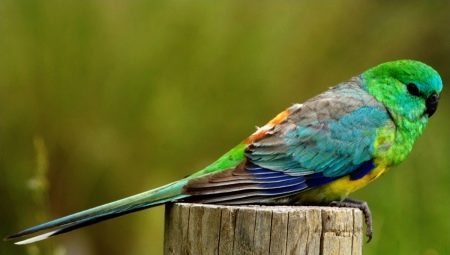
Song parrots are a fairly common species of birds, suitable for keeping in cages and aviaries. They are unpretentious to food, caring for them does not present any particular difficulties. In response to care and love, these birds will delight their owners with melodious singing.
Description
Distribution - southeastern and northeastern regions of Australia. In natural conditions, birds gather in huge flocks and can "raid" the planting and sowing of cultivated plants. They feed on seeds, berries, fruits, insects. They spend most of their time on the ground. Song parrots are mostly medium-sized and medium-sized, with a long tail, of the most varied colors.
Males differ from females in brighter, contrasting color plumage and beautiful melodic singing. Song parrots often settle near human habitation, arranging nests in barns, sheds and other buildings. The song parrot was first introduced to England in the middle of the 19th century. These birds live well and breed in captivity. With proper care, a singing parrot can live at home for 15 to 25 years.

Varieties
There are several types of song parrots.
- Yellow-winged, golden-shouldered or Queensland. Males have large golden-yellow spots on the wings, in the region of the shoulders, and red ones in the lower part of the abdomen. The females are dominated by a grayish color, with brownish-green tints. These parrots are medium in size, quite calm.
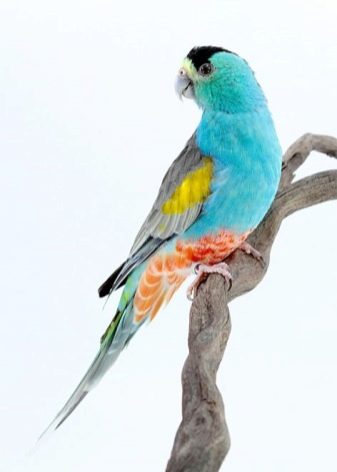
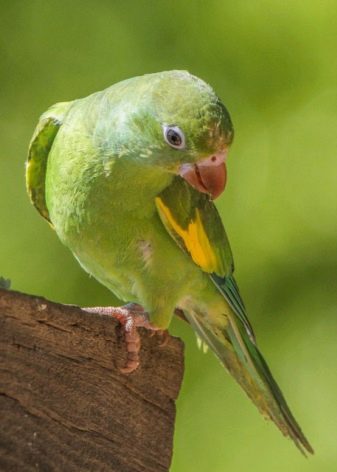
- Hooded. A distinctive feature of this species is a black “cap” or “hood” on the head. Males are brightly colored: various shades of green prevail - from light turquoise to dark olive.The central part of the back is gray-brown, the belly below is red with an orange tint, yellow stripes on the wings. The plumage of females is dominated by muted, faded colors.
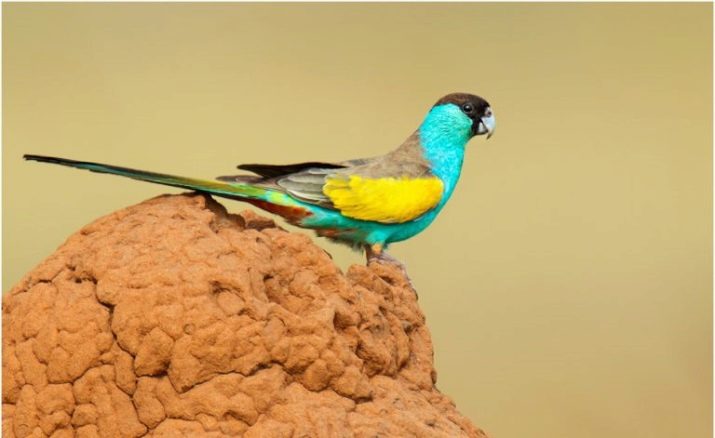
- Red-backed. The birds are small - the body length is from 26 to 28 centimeters with colorful plumage. Long tail (12-14 cm) usually of a darker shade. The males have feathers of bright, catchy colors. The back, head, thorax are green, the abdomen is yellow, and the wings are greenish with a yellow spot in the middle and blue flight feathers. There are several bright red feathers on the back.
Although the plumage of the females is faded and discreet, they are also very beautiful. These birds have a calm nature, they are quite peaceful towards other species of birds, but they usually divide the territory with their relatives.
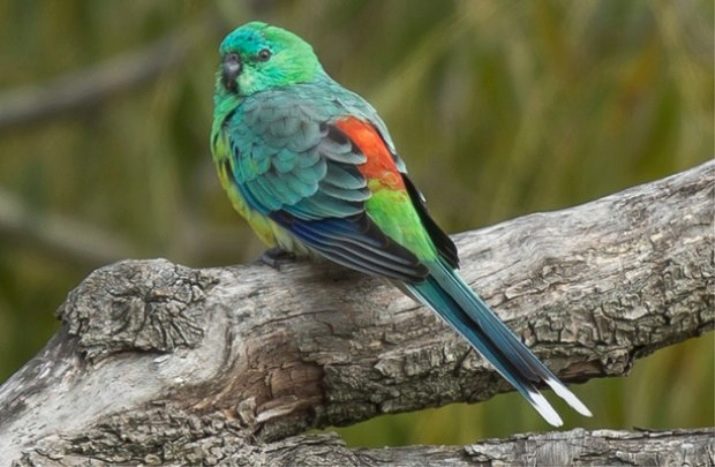
- Red-tailed blue-faced. As the name implies, these parrots (males) have blue spots on their "face", that is, near the ears, eyes, beak. The back and chest are brownish, the abdomen is yellow-red, the wings and tail are blue-violet. Very beautiful, spectacular color. However, despite the external beauty and melodic singing, experts do not recommend this species for breeding at home, especially for inexperienced poultry breeders.
The fact is that behind the angelic good looks, there is a difficult character. Birds are aggressive and quarrelsome, enter into a fight with any representatives of the feathered tribe, not distinguishing between friends and foes.
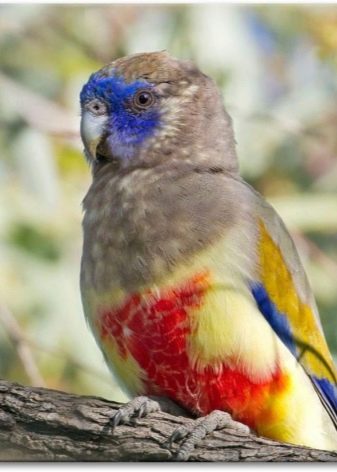
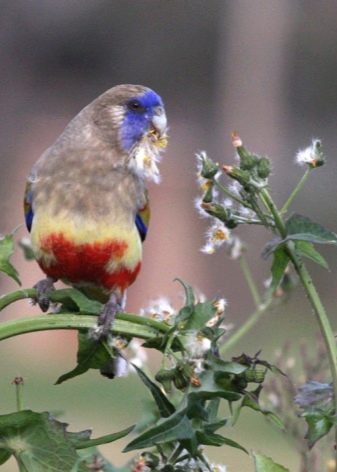
Features of the content
Song parrots have long been tamed by humans and therefore have adapted well to life in an apartment or house. However, there are some features of their content that you need to know in order to provide them with the most comfortable living environment. The main thing to remember is that small cages are not suitable for these birds. It is better to settle them in an aviary, 1 to 2 meters long, at least 80 centimeters wide, with a high ceiling.
In such a room, the parrots will have enough room to fly and train their wings.
A layer of sawdust or sand is poured onto the floor, about 5 centimeters thick. The litter is changed as it gets dirty, it is better to do this once a week. It is necessary to equip drinking bowls, feeders, sitting perches, as well as various toys for entertainment and physical activity, for example, ladders, swings, tree branches. You need to feed the parrots 2 times a day, morning and evening, at approximately the same time. Change the water in the drinking bowls daily.
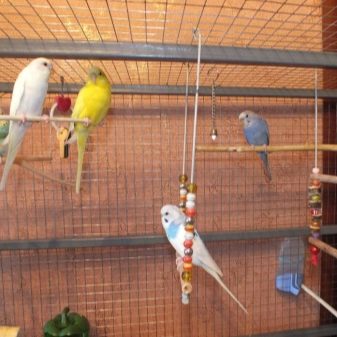
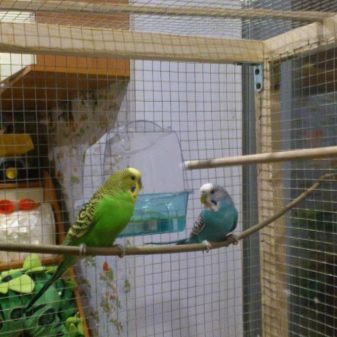
The menu must include such food as:
- the seeds - sunflower, millet, oats, buckwheat;
- cereals - fresh and boiled corn, sprouted wheat;
- legumes - boiled beans, lentils, peas;
- fruits - pears, apples, pomegranates, as well as exotic berries;
- vegetables - carrots, green bell peppers, cauliflower, broccoli;
- greens - Swiss chard, celery, twigs of shrubs and trees;
- you can add porridge.
In addition, parrots eat well the most common weeds, for example, dandelions, wood lice, amaranth, wheatgrass. Special food, which is sold in pet stores, is also suitable. And also bowls with crushed eggshells, chalk, fine-grained sand must be in the cage. Such supplements are needed for better digestion and assimilation of food. From time to time you can buy food and vitamins intended for parrots in stores.
Important! Song parrots can survive without food for no more than a day, so it is necessary to follow the feeding regimen.


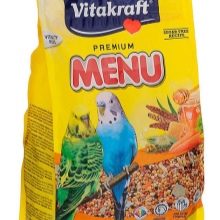
The following foods should not be given:
- milk, kefir, fermented baked milk;
- chocolate products;
- coffee;
- avocado;
- parsley;
- toasted dishes;
- salt.



It is imperative to look at the expiration date and appearance of any foods intended for feeding. To avoid diseases, birds are given only high-quality and fresh food. The air temperature in the room where the parrots are kept should be from 25 to 30 degrees with a humidity of about 65 percent. Do not place the cage next to heating appliances or in a draft.
Prolonged exposure to direct sun should also be avoided.Parrots are very fond of bathing. A “bath day” is arranged for them - a shallow but wide container with clean water is placed on the floor of the enclosure. At the end of the procedure, the "bath" is removed.
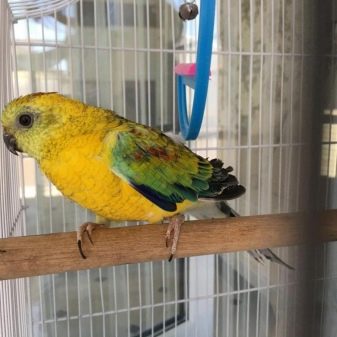
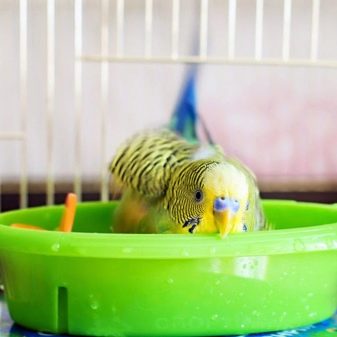
Breeding
Song parrots breed well at home. Their mating season is in the autumn-winter months. It usually starts in September or October and ends in December or January. In some cases, this period lasts until May. By this time, a nesting house made of plywood or boards, in shape and size reminiscent of an ordinary birdhouse, is being installed in the aviary. It is better to sprinkle the bottom with sawdust or sand.
The male takes care of the female, spreads its tail, rises on its paws, sings long and melodiously. The female reciprocates him, the birds sit side by side, coo slowly, picking each other's feathers with their beak. In a clutch, there are from 4 to 8 testicles. The female incubates them very diligently, almost never leaving the nest. The male takes care of her all this time, brings food. After about 21 days, chicks appear. Parents take turns feeding them, at this time it is necessary to add protein ingredients of animal origin to the menu - chopped eggs, small worms.
Feeding continues for about a month or more. After that, the grown up "kids" leave a cozy nest, but still remain in the care of the older ones for 2-3 weeks. As soon as young birds become independent, they need to be transplanted into another enclosure - otherwise division of the territory and a fight will begin, since they do not have a sense of affection, kinship.
During the year, a pair of parrots can hatch chicks 2-3 times. To give the birds the opportunity to rest and go through the molting period, the nest is removed from the aviary for a while.
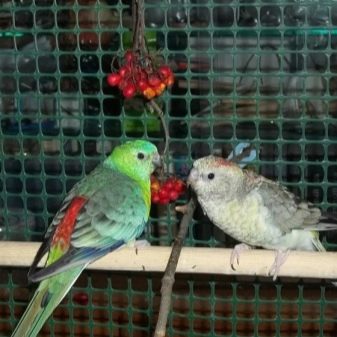
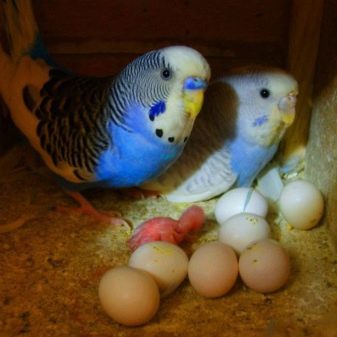
Diseases and their prevention
Like any animals and birds, parrots can get sick. Due to their low body weight, their metabolic processes pass very quickly, so you should not neglect the treatment. At the slightest ailment, you need to urgently contact a veterinary clinic or an ornithologist. It should also be remembered that there are diseases that can be transmitted to humans.
The main symptom of any beginning bird disease is a decrease in its activity. The parrot becomes lethargic, drowsy, sits in one place, ruffled, the plumage looks sloppy, fades. He eats very reluctantly or completely refuses food.
Other symptoms are sore, watery eyes, nasal discharge, frequent sneezing, indigestion, diarrhea, and nausea.
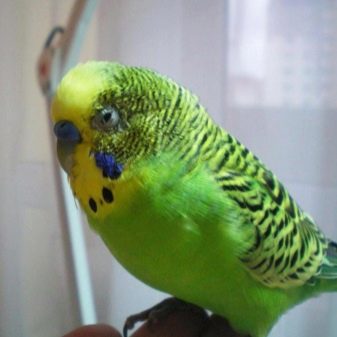
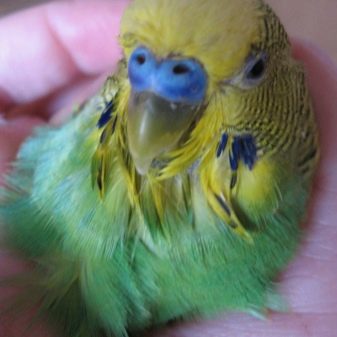
Often, diseases arise from improper living conditions, mistakes in care and feeding. Birds need to move and fly a lot to feel good and keep fit. This means that it is necessary to provide them with such an opportunity and keep them in large enclosures. The feed should be of good quality, not spoiled, mold and rot. It should be poured in small portions so that it does not stale.
Should provide a complete and varied diet, including vitamins and mineral supplements. Feeders and drinkers are rinsed daily. The aviary is cleaned weekly. They are completely washed and disinfected approximately once a month. Compliance with these conditions will make the maintenance of song parrots an enjoyable and easy task. Happy and healthy birds will delight their owners for many years.
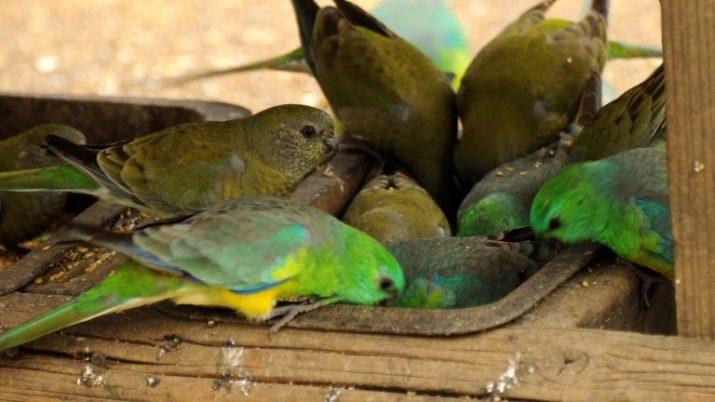
For information on what song parrots are, see the next video.








